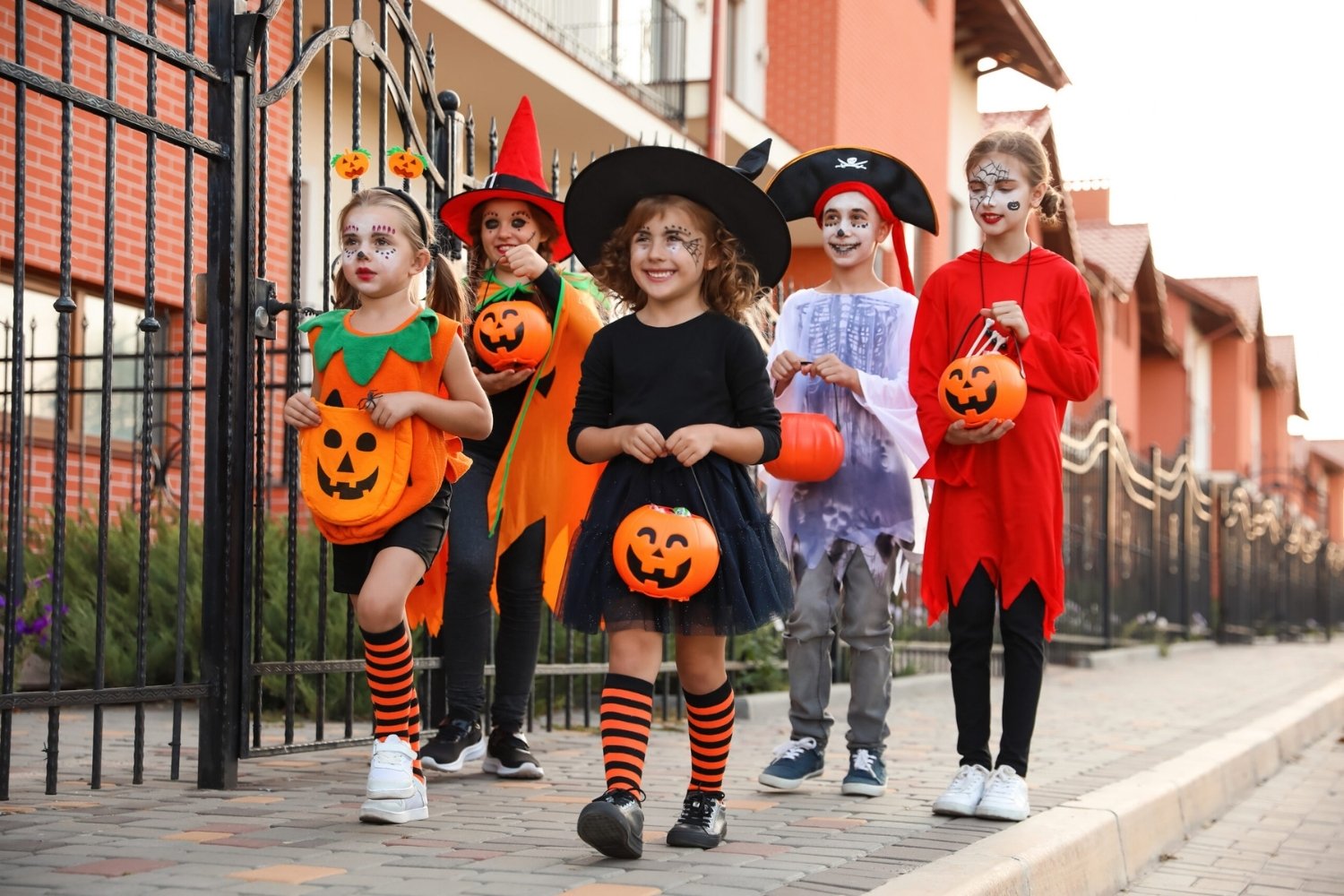
Ever wondered why kids dress up in costumes and go door-to-door asking for candy on Halloween? Trick-or-treating has a rich history filled with interesting facts. Originating from ancient Celtic festivals, this tradition has evolved over centuries. Did you know that the phrase "trick or treat" wasn't commonly used until the 1930s? Or that in some countries, children perform tricks or sing songs to earn their sweets? From the spooky costumes to the sweet rewards, trick-or-treating is a beloved custom that brings communities together. Let's dive into 25 fascinating facts about this Halloween tradition that will surprise you!
The Origins of Trick-or-Treating
Trick-or-treating is a beloved Halloween tradition, but where did it all begin? Let's dive into the history and origins of this spooky custom.
-
Ancient Celtic Festival: The roots of trick-or-treating can be traced back to the ancient Celtic festival of Samhain. During this festival, people would dress in costumes to ward off ghosts.
-
Medieval Beggars: In medieval Europe, poor people would go door-to-door on Hallowmas (November 1st), offering prayers for the dead in exchange for food. This practice was known as "souling."
-
Guy Fawkes Night: In England, children would go around on Guy Fawkes Night (November 5th) asking for "a penny for the Guy," which also influenced modern trick-or-treating.
Evolution in America
Trick-or-treating as we know it today has evolved significantly in the United States. Here are some key milestones in its development.
-
Early 20th Century: The practice of trick-or-treating began to take shape in the early 1900s, with children dressing up and going door-to-door for treats.
-
Post-WWII Boom: After World War II, trick-or-treating became more widespread. The post-war baby boom and suburban growth contributed to its popularity.
-
Candy Companies: Candy manufacturers played a significant role in popularizing trick-or-treating by marketing Halloween-specific treats.
Trick-or-Treating Traditions
Different regions and cultures have their own unique traditions when it comes to trick-or-treating. Here are some fascinating variations.
-
Mischief Night: In some parts of the United States, the night before Halloween is known as Mischief Night, where kids play pranks instead of collecting candy.
-
Trunk-or-Treat: A modern twist on the tradition, trunk-or-treating involves children going from car to car in a parking lot, collecting candy from decorated trunks.
-
La Calabiuza: In El Salvador, people celebrate La Calabiuza on November 1st, where participants dress as characters from folklore and go around the town.
Fun Facts About Trick-or-Treating
Let's explore some fun and lesser-known facts about trick-or-treating that might surprise you.
-
Candy Corn: Candy corn was originally called "Chicken Feed" when it was first created in the 1880s.
-
Jack-o'-Lanterns: The tradition of carving pumpkins originated from an Irish myth about a man named Stingy Jack.
-
Most Popular Candy: Reese's Peanut Butter Cups consistently rank as the most popular Halloween candy in the United States.
-
Teal Pumpkins: A teal pumpkin outside a house indicates that non-food treats are available for children with food allergies.
-
Candy Consumption: Americans purchase nearly 600 million pounds of candy each year for Halloween.
Safety and Etiquette
Trick-or-treating is fun, but it's important to stay safe and follow proper etiquette. Here are some tips to keep in mind.
-
Costume Safety: Make sure costumes are visible at night by adding reflective tape or carrying a flashlight.
-
Check Candy: Always inspect candy before eating it to ensure it's safe and hasn't been tampered with.
-
Respect Homes: Only visit houses with porch lights on, as this indicates they are participating in trick-or-treating.
-
Travel in Groups: Children should always trick-or-treat in groups and be accompanied by an adult.
Trick-or-Treating Around the World
Trick-or-treating isn't just an American tradition. Let's take a look at how other countries celebrate this spooky holiday.
-
Canada: Trick-or-treating is very similar to the United States, with children dressing up and going door-to-door for candy.
-
Mexico: In Mexico, children celebrate "Día de los Muertos" (Day of the Dead) by going door-to-door asking for small gifts or candy.
-
Ireland: The birthplace of Halloween, Ireland, celebrates with bonfires, parties, and children going door-to-door for treats.
-
Japan: Halloween has gained popularity in Japan, with children participating in parades and trick-or-treating in certain neighborhoods.
Modern Trends and Changes
As times change, so do the ways we celebrate Halloween. Here are some modern trends and changes in trick-or-treating.
-
Eco-Friendly Treats: Some households are opting for eco-friendly treats, such as organic candies or small toys, to reduce waste.
-
Virtual Trick-or-Treating: During the COVID-19 pandemic, virtual trick-or-treating events became popular, allowing children to celebrate safely from home.
-
Inclusive Celebrations: Communities are becoming more inclusive by offering sensory-friendly trick-or-treating events for children with autism or sensory processing disorders.
The Sweet Finale
Trick-or-treating has a rich history filled with fascinating tidbits. From its ancient roots in Celtic festivals to the modern-day candy bonanza, this tradition has evolved in delightful ways. Knowing these 25 facts can make your Halloween night even more special. Whether you're donning a spooky costume or handing out treats, you're part of a long-standing tradition that brings communities together.
Remember, safety first! Keep an eye on the little ones, check their candy, and enjoy the festive spirit. Halloween is more than just a night of fun; it's a celebration of creativity, community, and a bit of spooky magic. So, grab your costume, fill your candy bag, and enjoy the night. Happy trick-or-treating!
Was this page helpful?
Our commitment to delivering trustworthy and engaging content is at the heart of what we do. Each fact on our site is contributed by real users like you, bringing a wealth of diverse insights and information. To ensure the highest standards of accuracy and reliability, our dedicated editors meticulously review each submission. This process guarantees that the facts we share are not only fascinating but also credible. Trust in our commitment to quality and authenticity as you explore and learn with us.
